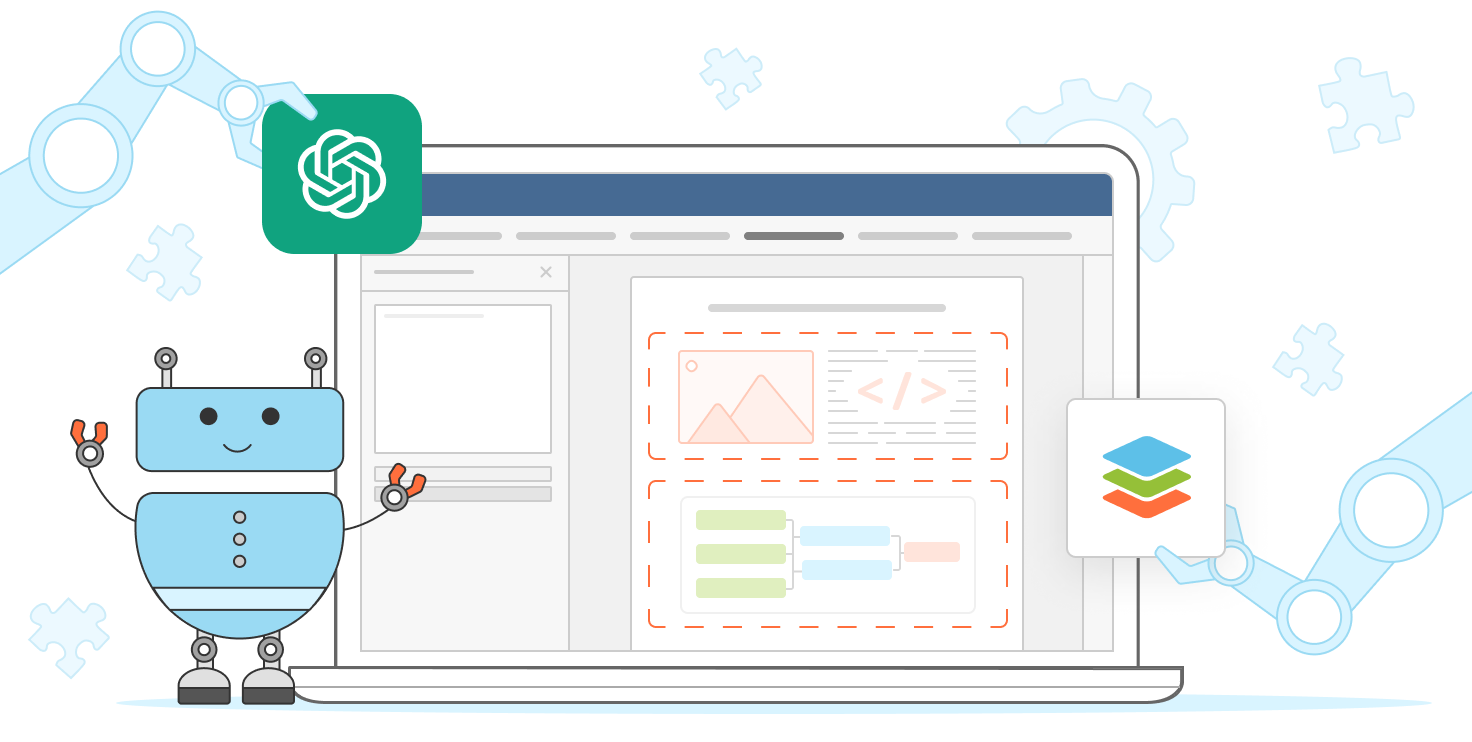Integrating GPT (Generative Pre-trained Transformer) with your website can significantly enhance interaction capabilities with users. Here’s a step-by-step guide on how to integrate GPT with your website:
1. Choosing a GPT Service:
Select a platform providing GPT services. One example is OpenAI, offering GPT-3.5. Obtain API keys to access the respective services.
2. Defining Usage Goals:
Clearly define the intended usage goals for GPT. For instance, it could be text generation, answering queries, language translation, etc.
3. Setting up Environment and Language Libraries:
Ensure your website supports language libraries and environments necessary for working with GPT. Depending on the chosen platform, this might include Python, Node.js, or others.
4. Integrating API Keys:
Embed GPT service API keys into your website’s code. This grants your website access to GPT functionality through the API.
5. Developing Functionality:
Create functionality using GPT on your website. For instance, you might develop a form for text generation, a question-answer interface, or integrate an automatic translation feature.
6. Handling API Requests:
Write server-side code to handle requests to the GPT service API. This involves sending requests using API keys and processing the received responses.
7. Processing Responses and Displaying on Page:
Process responses from the GPT service and incorporate the generated data into your website. This could involve inserting generated text, answering questions, and other elements.
8. Testing and Debugging:
Conduct thorough testing of your website after GPT integration. Ensure that the functionality works correctly, handles different usage scenarios, and doesn’t produce errors.
9. Performance Optimization:
Optimize your website’s performance when working with GPT. This may include result caching, code optimization, and handling requests asynchronously.
10. Documentation and Support:
Create detailed documentation on using the new GPT functionality on your website. Provide support for users, explaining how to interact with and utilize the new features.
11. Ensuring Security:
Ensure the security of your website when working with GPT. Restrict access to API keys, use secure data transmission methods, and regularly check for security updates.
12. Monitoring and Analytics:
Implement monitoring to track GPT usage on your website. Analyze data for optimization and improvements over time.
Following these steps will help you successfully integrate GPT with your website, unlocking new possibilities for user interaction.
13. Resource Management:
Optimize the usage of resources required for GPT. Keep a close eye on API request limits and choose an appropriate pricing plan based on your usage volume.
14. Enhancing User Experience:
Integrate GPT functionality in a way that enhances the user experience on your website. For example, provide personalized recommendations using text generation.
15. Privacy Compliance and Data Protection:
Ensure compliance with privacy standards and data protection, especially when dealing with sensitive user information. Use encryption and adhere to data protection laws.
16. Feedback and Collaboration with Users:
Actively gather feedback from users regarding the GPT functionality. Utilize this feedback for improvements and to create a more satisfactory user experience.
17. Engagement in the Technology Community:
Participate actively in the technology community related to artificial intelligence. Stay updated on the latest trends, share experiences, and receive support from the community.
18. Marketing and Promotion Strategies:
Incorporate GPT functionality into your marketing and promotional strategies. This might include creating unique content generated by AI to attract your target audience.
19. Ethics and Transparency:
Adhere to ethical standards when using GPT. Ensure transparency in the workings of algorithms, especially if they impact user interactions.
20. Building an Ecosystem:
Foster the growth of an ecosystem around your website by integrating GPT. This could lead to the creation of new applications, services, and partnerships, enhancing the overall value of your online presence.
21. Scaling and Growth:
Explore opportunities to scale your website using GPT. This may involve expanding functionality, adding new features, and attracting a larger user base.
22. Analysis of Results and Effectiveness:
Thoroughly analyze the results of GPT usage on your website. Use analytical tools to measure effectiveness and user engagement over time.
23. Adapting to New GPT Capabilities:
Stay informed about new capabilities offered by GPT. Adapt to changes and innovations to keep your website relevant and competitive.
24. Integration with Other Technologies:
Explore possibilities for integrating GPT with other technologies. For example, combining GPT with machine learning or speech recognition can create more powerful functional capabilities.
25. User Data Training for AI:
If your website collects data, use it for training AI. This will improve the quality of GPT’s work and provide more accurate and personalized results.
26. Feedback Mechanism and User Collaboration:
Create a mechanism for collecting feedback from users regarding GPT functionality. Use this feedback for continuous improvements and enhancing the user experience.
27. Staff Training:
Train staff responsible for technical support and website updates on the usage of new GPT functionality. This ensures proper support and ongoing development.
28. Regular Updates and Development:
Stay updated on GPT service updates and regularly update your website to leverage new features and bug fixes. Evolve the functionality according to user needs and technological advancements.
29. Marketing and Advertising Utilizing GPT:
Incorporate GPT functionality into your advertising and marketing campaigns. This could involve creating captivating scenarios, interactive chatbots, or AI-generated content to capture audience attention.
30. Closing Thoughts:
By following these steps and actively adapting to changes, you’ll not only successfully integrate GPT with your website but also ensure its resilience and development in the long run. Best of luck with your GPT-powered website!

